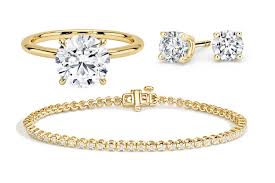
Gaborone: In local currency terms, there was growth in each of the top five diamond markets, which account for 75% of global demand. Growth would have been almost five per cent had it not been for the strengthening of the US dollar against the currencies of several of the major diamond consumer markets in the latter part of 2014, according to the Diamond Insight Report released by the De Beers today.
Despite the US being the most mature diamond jewellery country, its seven per cent growth was the strongest of any of the main regions. Growth (in local currency) was also seen in developing markets, with six per cent growth in China and three per cent in India.
Last year’s report highlighted three key trends that are shaping the future landscape of the diamond retail sector – and these have continued.
First, consumers across the world are looking increasingly to branded diamond jewellery for product differentiation, distinctive design, authenticity and quality. This is more prevalent in the US – where four in five retailers stock brands – but developing markets are also seeing increased sales of branded jewellery as consumers seek the greater reassurance offered by brands.
Second, the number of jewellery shops in developing Asian markets increased again last year (albeit at a slower rate), while the total number in more mature markets – especially the US – saw an overall reduction.
Third, online sales in both developed and developing markets continued to rise. While online sales in India, at less than one per cent of total sales, lag behind those in the US (at 13 per cent of total sales), increasing online penetration in developing markets is likely to result in the internet becoming a more important factor in researching diamond jewellery purchases.
Last year’s Diamond Insight Report also highlighted the competitive position of diamond jewellery against other luxury products, with categories such as electronics and fashion spend gaining share of advertising voice. However, in 2014 growth in jewellery advertising spend started to reach the levels seen in the fashion industry. While it’s too early to say if this trend will continue, it’s a positive development that needs to be maintained if the diamond sector is to compete more effectively with other luxury products.
In 2015, while there may be growth in local currency in some markets, the continued strengthening of the US dollar against all major currencies, coupled with a slowdown in economic growth in China, is likely to lead to global diamond jewellery demand for the full year being relatively flat compared with 2014 levels.
ROUGH DIAMOND SALES INCREASED 12 PER CENT IN 2014 TO OVER US$20 BILLION
De Beers and ALROSA remained the largest sellers of rough diamonds in 2014, accounting for 56 per cent of global sales by value between them.
In volume terms, total rough diamond production actually decreased by three per cent to an estimated 142 million carats in 2014. The total production value was more than US$19 billion, which represented an increase of almost six per cent on 2013.
De Beers and ALROSA remained the largest producers by both volume and value. Accordingly, Russia and Botswana remained the two largest producing countries by value.
While the development of new greenfield mines has been limited in recent years, three new mines did begin production last year, with a further mine being commissioned earlier this year. In overall terms, these new mines do not contribute significantly to global production.
Also, the project pipeline remains sparse, with only two large-scale projects currently in development – both of which are expected to begin production in 2016.
The result of these new mines coming online will be a moderate increase in diamond supply in the next few years. But, towards the end of the decade, when many existing mines will begin to see declining outputs, overall supply is likely to plateau.
In the short term, given lower polished demand levels in 2015, rough diamond demand has been more constrained as well. This is likely to have an impact on overall rough diamond production this year.
INDIA’S DIAMOND CONSUMER MARKET HAS ACHIEVED ALMOST UNINTERRUPTED GROWTH
The ‘In Focus’ section of this year’s Diamond Insight Report looks at India’s highly dynamic consumer diamond market. Driven by a growing economy, an emerging middle class and a culture where precious jewellery plays an intrinsic role in social occasions and family traditions, India has become one of the world’s largest consumer markets for polished diamonds.
Meanwhile, the jewellery retail landscape has changed dramatically over the past 15 years, with the number of doors selling diamond jewellery growing much faster than the average growth in all jewellery retail doors. While the retail landscape continues to be dominated by small, family-run independent jewellers, the small proportion of chains contribute a disproportionately high share of total sales value of diamond jewellery.
As affluence continues to grow, more Indian women will be able to purchase diamonds. In the next decade, 75 million new Indian households are expected to see annual income rise to a level above US$5,000-6,000, contributing to growing diamond demand.
Meanwhile, the number of Elite and Super Elite households is expected to grow at an even faster rate, presenting the industry with a major value growth opportunity.
In order to capitalise on the extraordinary growth opportunity in India, the domestic diamond pipeline will need to take differentiated approaches to increase the appeal of diamonds to new consumers. Research commissioned by De Beers, covering 40,000 Indian women, the largest study of this kind ever conducted in the country, gives these stakeholders a wealth of insight into how to reach these potential consumers.



